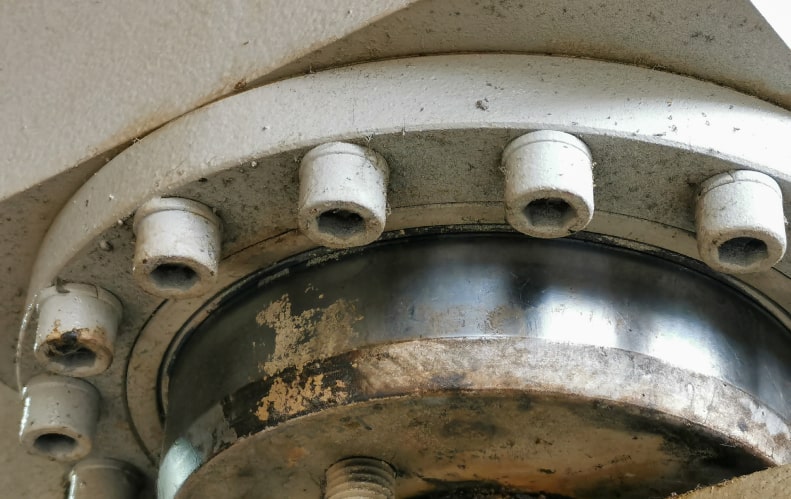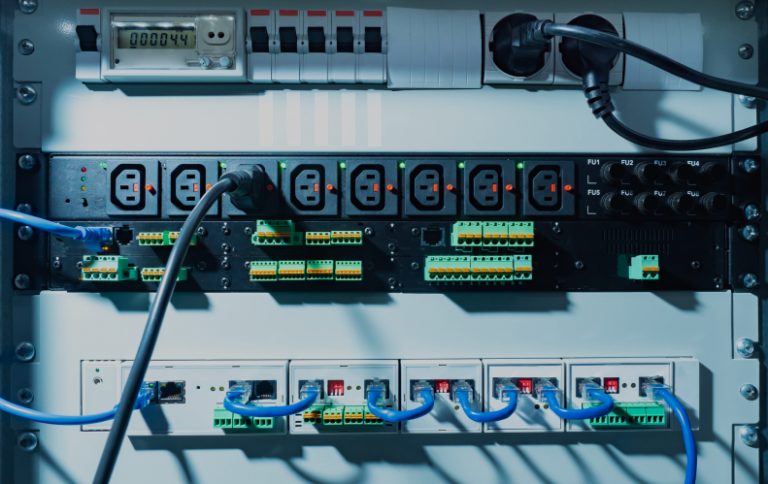In industrial maintenance, especially within oil & gas, petrochemicals, and power generation, one small error during flange separation can result in expensive consequences. Damaging a flange face doesn’t just affect sealing – it can compromise the entire system’s integrity, cause leaks, and result in unplanned downtime.
At Petracarbon, we’ve seen firsthand how the right tools – particularly a properly used flange spreader tool – can make all the difference in preserving flange health. In this article, we’ll explore why flange face damage happens, how to prevent it, and what tools help you get the job done right the first time.

Understanding the Flange Face and Why Damage Happens
The flange face is the mating surface where two pipes connect, and it forms a tight seal with a gasket. A smooth, undamaged face is essential to maintaining system pressure. Yet, many maintenance teams still use crowbars, hammers, or chisels to pry flanges apart – methods that often lead to surface gouges, misalignment, or warping.
Even a minor scratch on a raised face (RF) or ring-type joint (RTJ) flange can allow leaks to form, especially under high pressure. And with modern industries relying on increasingly tight tolerances, this is a risk no one can afford to take.
Using a Flange Spreader Tool: Your First Line of Defense
A flange spreader tool is purpose-built for safe flange separation. It inserts cleanly into the bolt holes or flange gap and uses mechanical or hydraulic force to push the flanges apart – evenly, gradually, and without damaging the face.
What makes the flange spreader tool so effective?
- Even force distribution prevents torsional stress.
- No metal-to-metal contact with the flange face.
- Adjustable designs accommodate a variety of flange sizes and pressure classes.
At Petracarbon, our clients often use our mechanical and hydraulic spreader kits during turnarounds, shutdowns, and field service jobs. These tools are engineered not only for performance but also to comply with stringent workplace safety regulations.
Supporting Tools That Ensure Flange Integrity
A flange spreader is just the beginning. To truly protect the flange face and ensure safe reassembly, you need the right supporting equipment.
Flange Alignment Tools
Misaligned flanges are a common cause of gasket blowout and face damage. Using flange alignment tools during reassembly ensures both flanges are brought back into parallel before bolting, reducing lateral stress on the gasket.
This is especially important in vertical pipe runs or offshore installations, where flange alignment can be thrown off by pipe movement or environmental conditions. Flange alignment tools correct angular and rotational misalignment without forcing components together.
Hydraulic Bolt Tensioners
Many technicians are now choosing hydraulic bolt tensioners over torque wrenches because they provide more accuracy, even preload across all bolts. This reduces the chance of flange face warping, especially in RTJ or high-integrity flanges.
If you’re unfamiliar with the difference, check out our article on Ensuring Precision with Hydraulic Bolt Tensioners and Torque Wrenches to understand why bolt elongation, not just torque, matters.
Hydraulic Torque Wrenches
That said, for many maintenance routines, a hydraulic torque wrench remains indispensable. It delivers controlled, repeatable torque – essential for flange joints where space is limited or access is difficult. Make sure your team uses a calibrated wrench with the correct pattern to avoid uneven compression and risk to the flange face.
Nut Splitters
Lastly, don’t forget the fasteners. If you’re dealing with seized or corroded nuts, never rely on grinders or hammers. A nut splitter will safely break the nut without damaging the bolt or flange surface – keeping your flange faces intact and ready for reassembly.
Common Mistakes That Damage Flanges
| Mistake | Consequence | Better Practice |
| Prying flanges with crowbars | Gouges on flange face | Use a flange spreader tool |
| Misaligned reassembly | Uneven gasket compression, leaks | Use flange alignment tools |
| Over Tightening bolts | Warping of flange | Use hydraulic bolt tensioners |
| Cutting nuts with grinders | Damage to bolt or flange | Use a nut splitter |
Real-World Insight: Saving Time and Equipment in Refinery Shutdowns
During a recent refinery turnaround in Southeast Asia, one of our clients saved over 40 hours of maintenance time by switching from manual separation methods to our hydraulic flange spreader tools.
Not only did they report zero flange face damage, but they also reduced rework during the gasket installation phase. Their maintenance lead told us:
“Before Petracarbon’s tools, we’d spend half our day trying to fix damaged faces. Now we don’t even think about it – it just works.”
Pro Tips for Long-Term Flange Face Protection
- Train your technicians on the proper use of hydraulic tools—not just how to operate them, but when and why to use them.
- Inspect flange faces after every separation using light and surface comparators.
- Use anti-seize and correct gasket materials to minimize sticking during disassembly.
- Always apply a cross-bolt pattern during tightening to distribute stress evenly.
Choosing the Right Flange Tool Kit
Every plant is different. Flange size, pressure rating, access, and environmental factors all play a role. Whether you’re working with 150 lb. flanges or 2500 lb. subsea joints, it’s essential to have the right combination of flange spreaders, alignment tools, torque wrenches, and bolt tensioners.
Our engineers at Petracarbon are always ready to recommend a custom tool set that matches your maintenance requirements.
Let’s Help You Do It Right
Damage during flange separation is 100% avoidable – with the right tools, the right training, and the right partner.
Explore our range of flange spreader tools, hydraulic torque and tensioning systems, and specialty tools like nut splitters designed to protect your assets, your schedule, and your bottom line.
Need a consultation or custom quote? Contact Petracarbon and talk to one of our field-experienced experts today.



